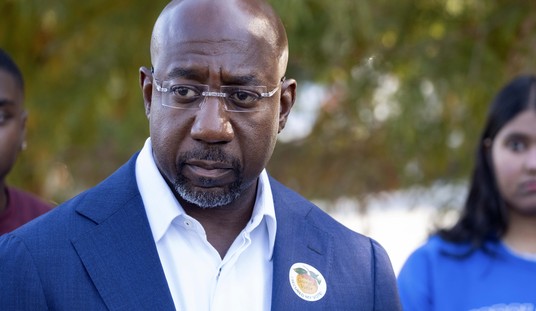
The early days of jet flight were some of the most dangerous in aviation history. The aircraft were rapidly moving at speeds and in ways that the mind and hand had a lot of trouble keeping up with. The margins for error were small. Unlike with propeller aircraft, jets had the relative glide path of a largish rock. Avionics were rudimentary and test pilots were frequently called upon to solve complex physics calculations mentally while under immense physical (G-forces) and mental (impending death) stress.
One of the top test pilots of the era was Chuck Yeager.
Charles “Chuck” E. Yeager was born on February 13, 1923, in Myra, West Virginia. The son of a gas driller, Chuck grew up working with a wide variety of mechanical devices. He could readily take apart an engine and put it back together without difficulty. A few months after his high school graduation, Yeager joined the U.S. Army Air Forces.
…
Yeager earned his wings in early 1943. After a brief assignment stateside, he transferred to England and began working with the 363rd Fighter Squadron. In early 1944, on his seventh mission, Yeager shot down his first enemy plane. However, his next sortie did not go as well.On March 5, 1944, his eighth mission, Yeager had to bail out over occupied France after his plane took an enemy hit. Despite being wounded, Yeager still evaded the Germans, with the help of the French Resistance, and made it into neutral Spain. Soon after, he returned to England. Although military rules prohibited him from returning to his unit, he appealed his case all the way up to General Dwight D. Eisenhower, who allowed him to return to his squadron.
If Eisenhower had any doubts about his decision, Yeager quickly put them to rest. After returning to his unit, Yeager shot down five enemy planes in a single day and became an “ace-in-a-day.” Later, he even downed a German Messerschmitt Me-262 jet while flying his propeller-driven P-51 Mustang. Throughout his 64 World War II missions, Yeager scored a total of 11-1/2 victories. (Pilots were credited with a “half” victory if pilots from two planes both hit an enemy aircraft.)
In July 1945, Yeager entered a new phase of his aviation career when he became a maintenance officer at Wright Field, Ohio, a job that entailed flight-testing all of the field’s different planes. Due to his growing experience with a wide variety of aircraft, and his outstanding piloting skills, Yeager caught the attention of Colonel Albert Boyd, the man in charge of the Air Force’s aircraft testing program. Boyd invited Yeager to become a test pilot, and the West Virginian accepted the offer.
In August 1947, Yeager transferred to Muroc Air Base, California (which would later become Edwards Air Force Base), the premier proving ground for the day’s most technologically advanced aircraft. Soon after arriving at Muroc, Yeager received orders to test the X-1, an experimental aircraft that some believed might exceed Mach One. On October 14, Yeager flew the X-1, which he had renamed the Glamorous Glennis in honor of his wife, faster than the speed of sound. With that flight, he traveled faster than any human being ever had, a remarkable feat considering the fact that he had broken several ribs during a horseback riding accident only a few days before. Revealing his characteristic sense of humor, Yeager radioed to one of colleagues: “I’m still wearing my ears and nothing else fell off, neither.”
Yeager’s next noteworthy flight occurred in 1953 while he was checking out the X1-A, a longer and more powerful version of the X-1…
The X-1 and X-1A were basically rockets with a man strapped onto them. They didn’t have the ability to take off, they were dropped from a modified B-29, and you had one chance to land as there was no fuel left at the end of the flight.
One of the great unknowns of the time was how an airframe reacted to trans-sonic pressures and supersonic speeds. The lessons were learned by the seat of the pants. Here is Yeager climbing out of the X-1A that will feature in this story:
On December 12, 1953, Chuck Yeager dropped free from his mothership and entered into aviation history after surviving… Well, listen to the audio of Yeager’s conversation with ground control. Pay particular attention to the tone of his voice.
In his pilot’s report, Yeager matter-of-factly described the sequence of events following launch:
“After a normal drop at 31,000 feet, chambers #4, #2, and #1 were ignited and [the] airplane was accelerated up to .8 Mach number. A flight path was formed holding .8 Mach number up to 43,000 feet where chamber #3 was ignited and the airplane accelerated in level flight to 1.1 Mach number. A climb was again started passing through 50,000 feet at 1.1 Mach number, 60,000 feet at 1.2 Mach number and a push-over was started at 62,000 feet. The top of the round-out occurred at 76,000 feet and 1.9 Mach number.
Chuck Yeager in the cockpit of X-1AThe airplane was accelerated in level flight up to 2.4 [2.535 indicated] Mach number where all of the rocket chambers were cut. The flight path was very normal and nothing uneventful [sic] happened up to this point.
After the engine was cut, the airplane went into a Dutch roll for approximately 2 oscillations and then started rolling to the right at a very rapid rate of roll. Full aileron and opposite rudder were applied with no effect on the rate of roll of the airplane.
After approximately 8 to 10 complete rolls, the airplane stopped rolling in the inverted position and after approximately one-half of one second started rolling to the left at a rate in excess of 360 degrees per second, estimated by the pilot. At this point the pilot was completely disoriented and was not sure what maneuvers the airplane went through following the high rates of roll.
Several very high “g” loads both positive and negative and side loads were felt by the pilot. At one point during a negative “g” load, the pilot felt the inner liner of the canopy break as the top of his pressure helmet came in contact with it.
The first maneuver recognized by the pilot was an inverted spin at approximately 33,000 feet. The airplane then fell off into the normal spin from which the pilot recovered at 25,000 feet.”
At this point in time, nobody— except for Yeager— had any idea of what he had just been through. Ridley and Murray had repeatedly attempted to communicate with him but, for obvious reasons, to no avail (and the development of reliable telemetry to the ground and radar tracking systems still had a ways to go in the early 50s). As Yeager recovered the aircraft, he was able to re-establish radio contact for the first time since he had commenced his push-over at 62,000 feet more than two minutes earlier:
…
Postflight data analysis revealed that Yeager had achieved a maximum speed of Mach 2.44 (1,650 mph) at 74,700 feet that morning. During his vicious – snapping and rolling and spinning – descent, he plummeted approximately 50,000 feet in 70 seconds and was subject to accelerations of plus 8 g’s, minus 1.3 g and side loads of 2’s.
A glance at the time histories for yaw, roll, and pitch rates during the first 50 seconds of his tumble provides even more telling evidence.
Some years later, Yeager’s great rival, [Scott] Crossfield, described this flight as the “fastest and wildest airplane ride in history” and, graciously conceded that “probably no other pilot could have come through that experience alive”. Thus, it was Yeager’s new record which was announced amid much fanfare at the Wright Brothers Memorial Dinner on 17 December and he was subsequently awarded the Harmon Trophy. In regard to all of the accolades, Crossfield concluded: “I didn’t begrudge him one of them. If ever a pilot deserved praise for a job well done, it was Yeager”.
You can read the transcribed voice recording and look at the flight telemetry here.
64 years ago today, I reached 2.5 times the speed of sound……then all hell broke loose. #bellx1, @x1, @CAP_USAF_AUX, @USAF, #airplane #supersonic #airplanes #Edwardsaffb, #therightstuff, https://t.co/TpiidzCpy3
— Chuck Yeager (@GenChuckYeager) December 12, 2017
Dec 12, 1953 – Went Mach 2.5 in X-1A, discovered inertia coupling, tumbled on all 3 axes, knocked out when I hit the canopy. Woke up. No egress systems. And that's not good. Here's the audio: https://t.co/FDrsJ5OX6t
— Chuck Yeager (@GenChuckYeager) December 11, 2017














Join the conversation as a VIP Member